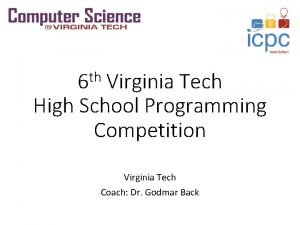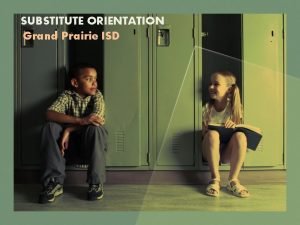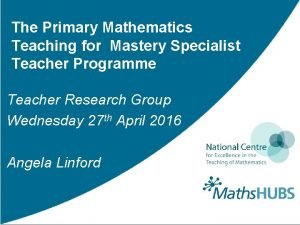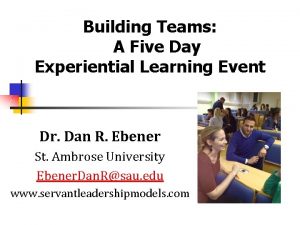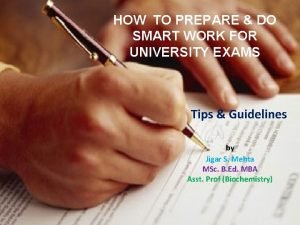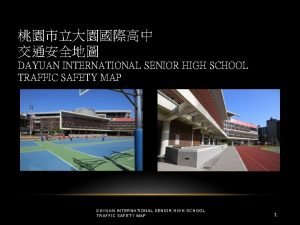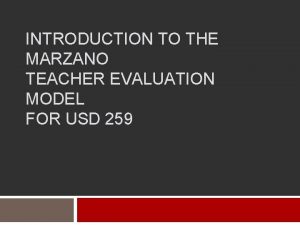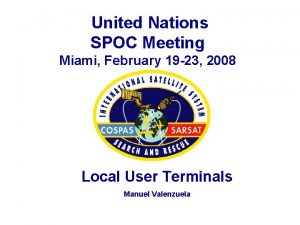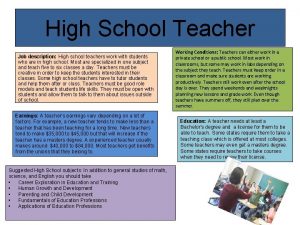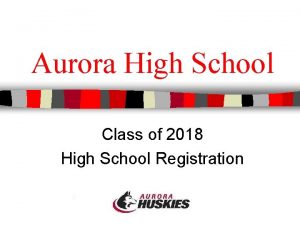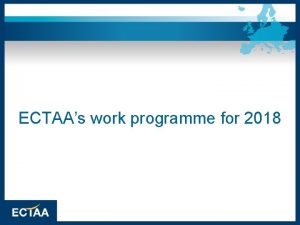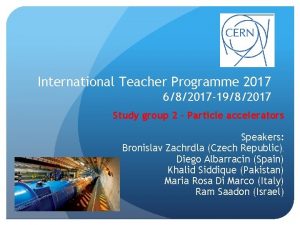International High School Teacher Programme 2018 WORK GROUP


















- Slides: 18

International High School Teacher Programme 2018 WORK GROUP: 7 - PARTICLE DETECTORS Ø Ø Ø Krisztina Gulyas Mukesh Tiwari Mahesh Chamara Panagiota Alexandra Fratti Toufic Haddad Snejana Valtchanova

Particle Detectors in School Education

Introduction: § Basic concepts of particle detectors are introduced in the high school (16 -18 years) § Particle detectors at the university level. § Presentation- focus: • High school students • Fundamental principles of particle detectors and its types. § Engineering and technical details are not included. § Particle detectors as stimulus for students in primary school § Analogy between particle detectors and mystery boxes(primary students)

Introduction: § Atomic model with an introduction to subatomic particles and properties. § Nuclear physics, radioactivity with alpha, Beta and Gama decay § Prior knowledge of these topics is a prerequisite for the students to study particle physics § Introduction of Lorentz force and its application in determining the trajectories § Charged particle with mathematical formula and calculations is also introduced § This information can be used to teach trajectories of charge particles in a particle detector.

Curriculum & classroom connections § Atomic model (Thompson, Rutherford, Bohr) § Meaning of elementary particle and identifications § Describing particles in terms of it’s properties(mass, charge, quantum and spin) § Photoelectric effect (Einstein’s equation) § Radioactivity (He; alpha, beta, gamma) decays § Provoked Nuclear (Fission, Fusion)

Curriculum & classroom connections § Standard model § Fundamental interactions and explanations in terms of exchange particles § Experimental evidence for the standard model § Introduction to Antiparticles § Representation using Feynman Diagrams § Particle accelerators and detectors § Counters (Geiger - Miller counter) § Cloud chambers.

Key ideas § Identification of observable properties. § Interaction of particles with materials and fields. § Data collection and measurement. § Filtration and Analysis.

Helpful material and resources Virtual Atom Smasher An interactive game that lets students become virtual scientists at CERN! Presented with real data and tools that scientists use students are guided step-by-step through the exciting world of particle physics! http: //test 4 theory. cern. ch/about/ Particle Clicker A game that teaches players the history of high energy particle physics https: //particle-clicker. web. cern. ch/particle-clicker/ Quark poker Playing cards to discover the elementary particles and their interactions. Suitable for all audiences. http: //ippog. org/resources/2012/quark-poker

Potential Student (Mis)conceptions and Challenges § Choosing a relevant model for scientific explanation § Making connection between conservation laws as applied to particle physics. § Confusion between mass-energy equivalence. § Diagrammatic representation of particle interaction(Feynman Diagram) § Lack of understanding of detection principles (like application of semiconductor physics. )

Potential Student (Mis)conceptions and Challenges § Lack of experimental facilities and equipment(Lot of theoretical information) § Teacher misconception and lack of experience.

Particle Detectors for primary school students Curriculum & classroom connections • Particle detectors extremely specialized for primary education • Can be featured in the classroom in a broader way Key idea CERN and particle detectors at CMS, ATLAS, ALICE are a stimulus for students and could : Help students understand follow the scientific method Potential students’ conceptions and challenges They believe that: • Science and scientific ideas are absolute. • Science and its methods can answer all questions.

Practice example • “Be a Physicist “ • 9 -12 year old students • Offers teachers and their pupils the opportunity to work like real scientists The kit includes the necessary tools to carry out the project. • A booklet setting out theory and containing practical information • Mystery boxes • Control boxes https: //voisins. cern/en/offre/be-physicist

Practice example Particle Detectors • Physicists at CERN search for invisible elementary particles Mystery boxes • Pupils conduct investigations to identity the contents of mystery boxes they cannot open. Common value : Successive hypotheses and experimentation.

STEPS Step 1 - Observation Step 2 - Handling Step 3 - Equipment Step 4 - Experiments Step 5 - Analysis and validation Step 6 - Communication

Helpful material and recourses If our students want to learn more about particle detectors http: //www. cernland. net/index. php https: //atlas. cern/colouring-book http: //papadakis. net/books/the-large-hadron-collider-pop-up-book/

Best practice examples Alpha particle track in magnetic field Calculation of the radius using Lorentz force using TI-Nspire application.

Bibliography https: //indico. cern. ch/event/572855/sessions/239268/attachments/15 09885/2354131/ITW 2017_Study. Groups_Final. Reports. pdf http: //nspire. fi/ https: //physics. stackexchange. com/questions/95918/why-does-thespiral-of-a-positron-have-a-larger-radius-than-that-of-an-electron http: //www. unige. ch/fapse/dlpc/ https: //atlas. cern/colouring-book http: //teachers. yale. edu/curriculum/viewer/initiative_14. 02. 09_u http: //www. ipa. phys. ethz. ch/research/Research. Projects/cms. html http: //www. thestaffingstream. com/2012/08/29/strong-sowmanagement-is-key-to-project-success/ https: //www. financialexpress. com/opinion/education-in-india-how-todelink-classroom-teaching-from-student-learning/431437/ http: //test 4 theory. cern. ch/about/

 Virginia tech high school programming contest
Virginia tech high school programming contest Grand prairie isd substitute pay
Grand prairie isd substitute pay Que letra continua m v t m j
Que letra continua m v t m j 5 big ideas maths mastery
5 big ideas maths mastery Models in social group work
Models in social group work Team vs group
Team vs group Smart work vs hard work group discussion
Smart work vs hard work group discussion Dayuan international senior high school
Dayuan international senior high school Pltw master teacher 2018
Pltw master teacher 2018 Marzano teacher evaluation
Marzano teacher evaluation Programme for international student assessment 2021
Programme for international student assessment 2021 International cospas-sarsat programme
International cospas-sarsat programme Un 2030 agenda
Un 2030 agenda International advocacy programme
International advocacy programme Pull out you've hit an artery
Pull out you've hit an artery International advocacy programme
International advocacy programme Who programme for international drug monitoring
Who programme for international drug monitoring Deped erf
Deped erf Good afternoon my dear students
Good afternoon my dear students
